#someone in the writing team just watched Megamind and learned the importance of presentation
Text
Potential Films to Explore
In this post, I’m writing up my initial ideas for the Narrative Research project: exploring three potential films to look at and the subject material they offer before reaching a conclusion.
1. Megamind (2010)
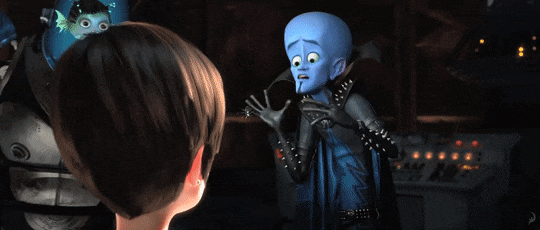
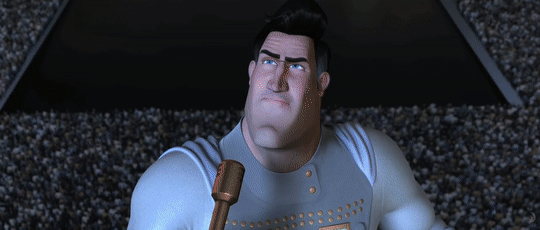
My first candidate is Dreamworks’ Megamind, an American 3D computer-animated film following the story of a super-smart alien super villain, who actually beats the superhero! With complete control over Metro City, Megamind eventually finds out that he has no purpose without his much-loved enemy Metro Man. He constructs a new superhero to serve as an artificial nemesis, but when this plan horribly backfires and results in an all-powerful supervillain instead, Megamind attempts to set things straight and discovers his newfound role as a superhero.
This film gives me the chance to discuss a range of interesting narrative structures, including the Rebirth plot type by Christopher Booker. Whilst I could explore the film in relation to Booker’s plot type, and how the film subverts or follows his described structure - I’m more inspired by the idea of a villain’s journey. Taking an interesting spin on Campbell’s mono myth, Megamind presents a flat-out villain at the beginning of the film who, after learning a few valuable life lessons, becomes a hero. I feel like it would be interesting to analyse how the film’s narrative subverts ideas of the Hero’s Journey and effectively exaggerates and stretches each step: instead of beginning the narrative as an everyday person, they are a morally evil character. Hence, the protagonist needs to undergo more growth and development than your run-of-the-mill Hero’s Journey story.
This is also quite interesting in terms of social change; Megamind follows the life of a super villain - someone who isn’t morally good, noble or righteous. It’s an engaging spin from Dreamworks, and instantly subverts the cliches of regular superhero flicks. The film could also allow me to discuss the third question, looking at the film as an engine for social change and how it presents ambiguous morals. Towards the end of the film, Megamind realises his new-found role as a hero - commuinicating to the audience that they, too, can do the right thing (even if they weren’t that good in the first place).
As a whole, Megamind represents an interesting choice for this project. The brief asks us to analyse the narrative of our film, and I feel like the idea of a villain embarking on his own Hero’s Journey towards redemption is an engaging plot to analyse.
2. Anomalisa (2015)

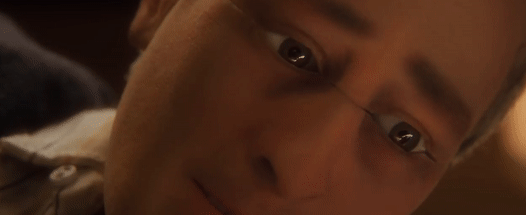
A film that makes the audience forget they are even watching an animation, Anomalisa is a brilliant and emotional character drama written and directed by Charlie Kaufman. The film explores what it means to be human, in a way that truly understands the complexity of the human experience and personal connections between people and does so expertly through animated puppets. We follow a lonely business man who perceives everyone he meets as identical, and boring. This is, at least, until he meets a unique woman in a Cincinnati hotel.
This film allows me to discuss the fourth question, exploring how the medium of stop motion animation is a core and essential part of the film - and essentially defines the film’s narrative. It’s important that we discuss the film’s approach to animation as well as the plot, so this would be an interesting pick. Not only is this a film that I personally love, there is also plenty of room for meaninglful critical analysis: in comparison to Megamind, Anomalisa deals with much more complex and meaningful ideas and themes such as self-absorption, loneliness and anxiety. Kaufman is able to present an unnerving study of the human experience through stop motion puppets, in which a mental breakdown and flash of anxiety is portrayed by the puppet’s mouthpiece and voice malfunctioning. Anomalisa benefits from eerily creepy imagery that could only be achieved through a masterful and unsettlingly detailed use of stop motion animation. I could explore why this narrative needed to be told through a stop motion lense.
3. Spider-Man: Into the Spider-Verse
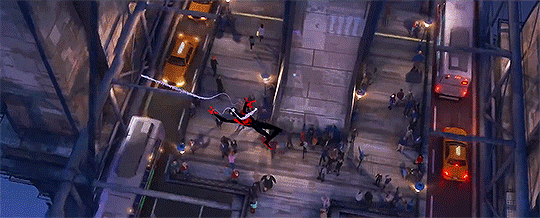
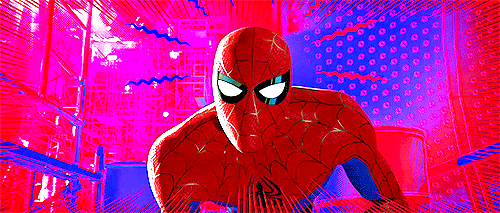
My last film pick for this narrative research essay is the recent Spider-Man: Into the Spider-Verse. A marvel of computer-generated animation, the film follows Brooklyn teenager Miles Morales, as he picks up the mantle of Spider-Man after being bitten by a similar radioactive arachnid that once bit Peter Parker. Soon, Miles realises that he’s not the only Spidey out there, and forms a team to battle the hulking Kingpin, an evil business-turned-mad-man who has the power to open portals to other dimensions in a tragic attempt to bring his loved ones back from the dead.
This, to me, is the most interesting choice. Whilst I’m engaged by the introspection of Anomalisa and the villain-turned-hero aspect of Megamind, it’s Spider-Man: Into the Spider-Verse that I keep coming back to. A dazzling, fluid animated feature film with a hand-drawn comic book touch, this pick gives me the opportunity to discuss all of the potential questions. It’s a film that’s able to encapsulate the essence of a comic book to the big screen in a way that no other live-action feature can, with a groundbreaking new visual style that manages to replicate the look and texture of a comic book panel. The animation is fluid, snappy and pops on screen: just as a film featuring Spider-Man should do.
For my response to this project, I plan to focus on a specific question outlined here but also discuss other aspects of the film as a way to construct a well-rounded, considered analysis of the film.
What I’m personally inspired by about Into the Spider-Verse is it’s complete understanding of Spider-Man’s character: the film effectively examines what it means to be hero, and so embodies the ideas of the Hero’s Journey very nicely. I could easily analyse the narrative with close reference to the Hero’s Journey, and even explore the idea of a story’s purpose too.
The film has made a huge cultural impact, and is praised by both critics and fans alike: it’s a successful movie with a powerful message that the film expertly uses to its advantages: ‘anyone can wear the mask’. It’s this new idea of a universality to the Spider-Man character that allows me to discuss the third question with some real weight: how Into the Spider-Verse has used its universe-bending narrative as a vehicle for social change, teaching its all-ages audience that anyone can be Spider-Man, not just Peter Parker. There’s definitely some good analysis material here, and I could easily tie it in with the film’s total understanding of everything the character of Spider-Man represents.
Aside from this, Into the Spider-Verse is praised for it’s groundbreaking new visual style, a love and appreciation for the comic style of old that’s hand-drawn into every frame. And it’s not just how every shot of the film looks and feels like a comic book through hand-rendered graphic pointillism to evoke the poppy art style of classic superhero fare, it’s the film’s snappy approach to computer generated animation that makes the movie shine. There’s nothing that really feels like Into the Spider-Verse, and that’s because the creatives behind the film took over two years to establish the look of the film. They wanted something fresh, new and exciting - and that’s what they got. With a slightly lower frame rate than most other films, Into the Spider-Verse feels like a set of continuous moving panels in a way that bursts with energy and plain…fun. Comic-book onomatopoeia springs up throughout the film, and Mile’s thoughts pop up through narration bubbles and boxes. It’s a film with spectacular visuals that pop off the screen, a mix of graphic tones, vivid colours and snappy animation that makes for a great essay subject choice.


Finally, this film represents the epitome of the super-hero movie in both storytelling, characters and visual style - and this is something that I’ve briefly mentioned already on this blog. I’ve discussed how superhero movies could be argued as the ‘new fairytales of cinema’, and this is a theory that I’m actually really interested by. Into the Spider-Verse not only represents a culturally-relevant candidate, but also an opportunity to explore the idea of a modern fairytale in depth too.
In this post, I’ve written up my initial thoughts on the project - exploring some potential candidates for the Narrative Research essay and settled on a conclusion on my film choice: Spider-Man: Into the Spider-Verse. This was something I realised fairly early on in the project, just because of my passion for the film and it’s brilliant approach to animation, but here I wanted to evidence a few ideas and alternative analytical directions before settling onto my chosen animated narrative.
Next week, I will begin collecting research sources for my essay exploring Spider-Man: Into the Spider-Verse (through online videos, books and any other media of discussion) and decide on an essay question. I’ve got a basic idea of the themes and concepts I want to discuss with this essay, but I need to have more of a focus and central question to begin the research process.
1 note
·
View note
Text
The writers shot themselves in the foot when they made S2 finale. There's no way they can ever top the moment where Hawkmoth akumatized two musicians for the sole purpose of entertainment.
#someone in the writing team just watched Megamind and learned the importance of presentation#and they did a splendid job at that#Hawkmoth is such a drama queen but this is his best moment#we should've gotten more of him like this#miraculous ladybug#miraculous#mlb#miraculous salt#ml salt#mlb salt#ml writers salt#ml writing salt#ml writing critical#ml writing criticism#miraculous gabriel#gabriel agreste#gabriel salt#thomas astruc
45 notes
·
View notes